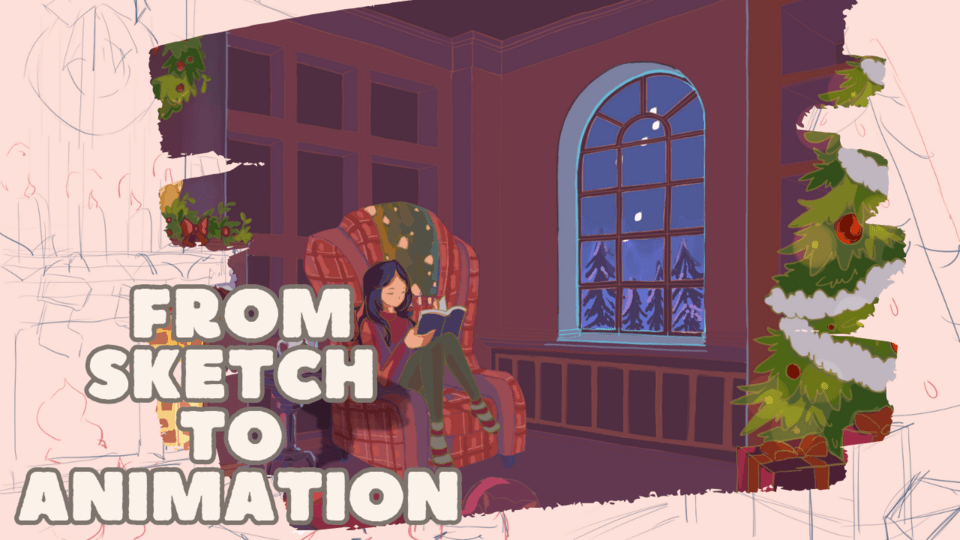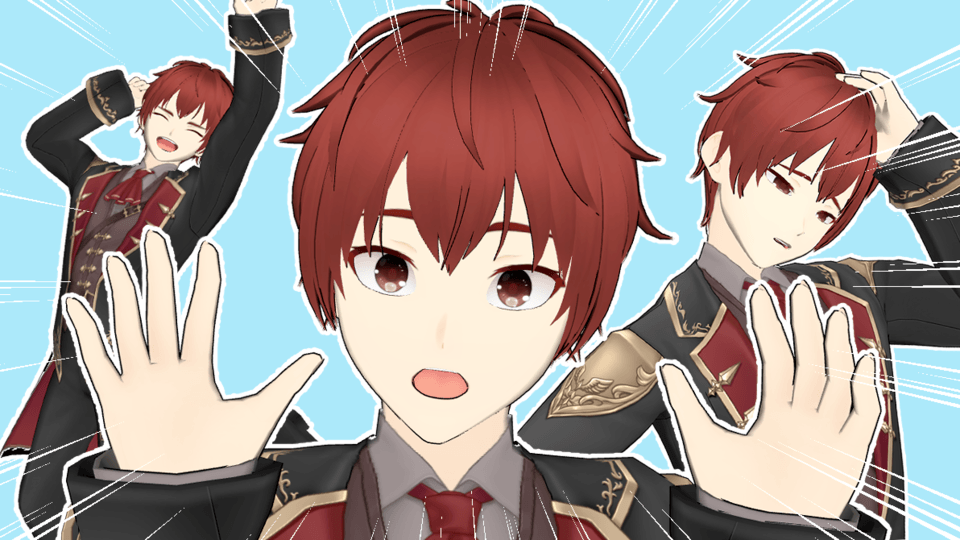Shading in the manga style
In this tutorial I want to show you how to shade characters in a manga style. I go into the skin, hair and clothing. First I will guide you on the basics you need for shading and then you can start.
I. Light sources
Light and shadow are interdependent. Without light, there is no shadow. The shadow is always opposite the incidence of light. Take this into account with your shading and you will have a beautiful living result. Always observe nature or yourself in front of a mirror and use a lamp to test different incidences of light and how they behave.
From above:
With this light setting, the light comes from above. The object that you want to shade is illuminated from above, which means that it is light above and darker towards the bottom. Depending on whether the figure has a surface, it also casts a shadow on it. However, this light setting is rarely seen, as your figure then has to be directly below.
From diagonally above:
Here the light does not come directly from above, as shown in the previous example, but from above at an angle. That can be from the left or the right, the angle can also be different, you have to consider this with your shading. However, the light does not hit your figure in the middle, so one half of the figure will be darker and the other half will be lighter. This light setting is observed more often because it is more likely that you are not sitting directly under a light source but a little further away.
From behind:
There the light comes from behind. There is a special feature here because the edges of the figure are brightly lit and the side facing you is dark.
From underneath:
In this representation, the light comes from below. This light setting is the exact opposite of illustration A), it should be noted that the body is illuminated from below, creating completely different shadows than with the other lighting conditions. These conditions are possible if, for example, the character is sitting on a luminous platform.
II. The shape
Now let's look at different shapes and what you have to consider when it comes to shading. First of all, you can divide every body (complex shape) into basic shapes. I differentiate between round, rather soft and angular and hard shapes. As an example, look at a head, which is roughly divided into round and angular shapes. The forehead would be more rounded than the eyes and the nose and the chin would be more angular and pointed. Round shapes tend to have soft shadows and angular shapes tend to have hard ones.
III. Shadow colors
To lively shade your figures you can make use of the complementary contrast. This is created when you combine colors that are opposite each other on the color wheel. Examples of this would be yellow to purple, green to red, and orange to blue. For a skin-colored tone that is more between yellow and orange you can use a mixture of blue and purple. I like to weaken it a little in terms of color intensity in order to get a harmonious color transition. In the practical part I will also apply this in practice.
IV. Types of shade (hard and soft)
Now I'll explain to you what I mean by hard and soft shadows. Hard and soft shadows can arise depending on the light distance and the intensity. For example, global ambient light casts rather soft shadows because the light is not directed specifically at your figure, for example, like the light of the sun during the day outside in nature. However, if the light source is more focused and closer to the figure, harder shadows are created. This is also the case when two objects are next to each other and are illuminated. So the first object gets a rather soft shadow but throws a hard one on the second object as shown in the picture.
V. Practice
I will now show you how you can get a shaded result from your primary colors. We feel our way step by step from left to right.
1.High
With this drawing I decided to let the light come from the top left. I always like to start with the shading on the face, first I use a darker shade than our skin and for the deeper shadows I use a dark purple-gray shade.
In doing so, I shade the areas under the hair and eyes parallel to the light. Don't forget to shade your ears too. The shadow with the most effect is probably the one under your head because you have to imagine it like a ball on the body on which the light “sticks”. Then continue with the rest of the skin and then put the darker shade in the darker shadows to create depth.
2. hair
Next I shade the hair, here I follow the curve of the strands and use a slightly darker color. Again, of course, I pay attention to the direction of the light.
Here I add shine to the hair. Here I orient myself on the shape of the head, for this I use a lighter shade than the hair color and set the layer to add (glow).
Now I set even darker shadows that are cooler than the normal shadows and blend the shine with a wiping tool.
3. Clothing
Let's start with the clothes here, I first roughly set striking shadows over the figure. It is important to think of the shadow under the chest or the shadow that arises when items of clothing meet and cast a shadow.
Here I let the shadow fade out on the light side and intensified it with a cooler and darker color on the shadow side. So yours gets a living result.
4. Eyes
I have the eye coloration here separately. I shade these quite dark to achieve a nice effect.
First I draw in the pupil and the rough shadow. Here I use a darker shade of green and blend it into the Wipernkreis black. What you should pay attention to is also the shade of the white of the eye and not just the iris. This will make your eye look more alive and blend in better with the rest of the character.
Here I added shine to the eye I like to do that because it fits my style, but you have to decide what you like best. I have also highlighted the eyelashes to give the eye a character, this is of course optional.
Thank you very much for your attention!
I hope you enjoyed this tutorial and learned something. I would be happy if you watch the corresponding video.
If you want to know more about me, I'm Miriko Art 29 years old, full-time web designer, come from Germany and have been drawing in manga style since 2011. I love to draw pretty and sweet girls with animal ears.
My specialty is digital drawing. At the moment I'm working on my first own manga "Milky Paradise". I am happy to share my knowledge in the form of video tutorials on Youtube, if you would like to see more of me follow me on:
Facebook: https://www.facebook.com/
Instagram: https://www.instagram.com/mirikoart/
Youtube: https://www.youtube.com/channel/UCDxMDd4qodiJW0HB29KY5fA
Website / Shop: https://www.miriko-art.de/
























Comment